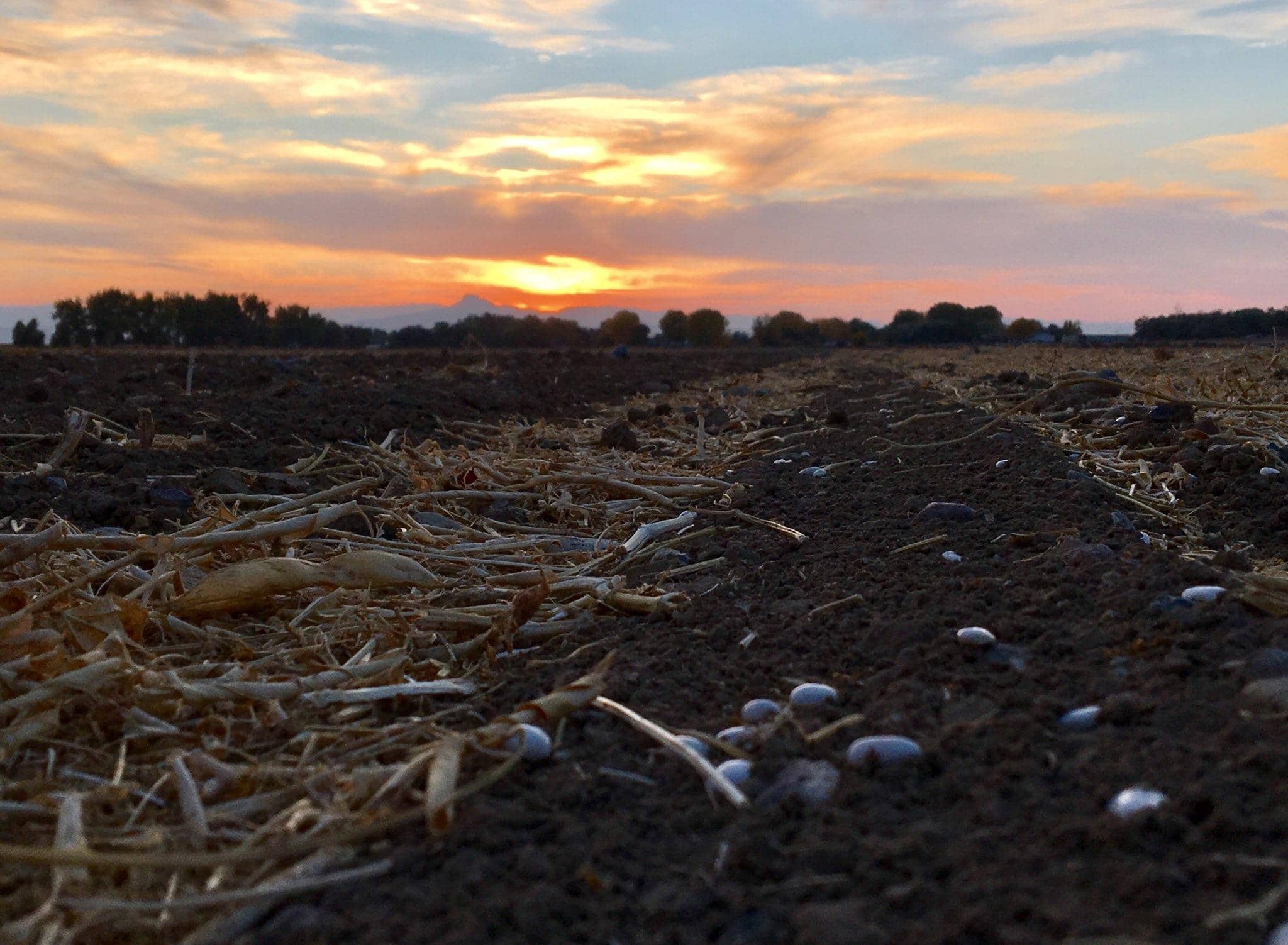Following a strenuous year for dry edible bean production, a second wave of bad weather is the last thing bean producers needed this year. As a matter of fact, some bean companies were so short on seed this spring, they found themselves sifting dry beans out of warehouse dust piles to ensure producers had enough seed to plant during a pandemic.
That was due to a nearly 50 percent reduction in planted and harvested acres across the nation for dry beans in 2019, marking the second lowest amount in almost a decade. It also stemmed from harsh weather conditions, that killed thousands of acres which farmers were hopeful would produce a bumper crop.
Leann Schafer from New Rockford, ND serves on North Dakota’s Dry Bean Council and represent the central and western part of the “Peace Garden” state. She told Northern Ag Network in an email, “for some, 2019 harvest finally wrapped up in July 2020.” That was due to wet conditions in September and October of 2019 that produced 13 inches of rain followed by 33 inches of snow.
Wyoming producers also faced similar struggles in 2019. According the United States Department of Agriculture’s (USDA) National Agricultural Statistics Service (NASS) annual crop summary, harvested acres fell 40 percent from 2018 levels for the “Cowboy State.”
So, to say a lot was riding on 2020’s production is considered an understatement.
2020 Growing Season and Harvest
North Dakota typically produces the most acres across the nation of dry edible beans annually. According to the USDA’s Prospective planting report in late March, North Dakota was intending to plant 650,000 acres during 2020. To put that into perspective, Minnesota was noted with the second largest acreage intentions at 215,000 acres.
Justin Retterath of Washburn, ND is one of the producers that helps contribute to those acres. He also sits on the Northarvest Growers board as a director for the central and western half of North Dakota. He told Northern Ag Network in an interview, “there was a lot of guys that grew pintos this year that never had before just because of the shortage.”
Retterath added seed was found somewhere saying “North Dakota planted way over the estimated acres that we thought we would get in with the seed supply that was available.” And right he was! According to a USDA Acreage report on June 30th, North Dakota producers planted 810,000 acres, up 32 percent from last year and the highest amount ever on record.
Wyoming dry bean acreage also saw an increase of 29 percent as the producers in the Equality State turned 27,000 acres into dry edible bean production.
Jeff Chapman is chairman of the Wyoming Dry Bean Commission as well as regional manager for Kelley Bean Company. He said in an interview with Northern Ag Network, some beans in Wyoming and Montana “had to be irrigated up which delayed some maturity,” adding hot, dry weather hinder some growth as “beans do not like temperatures over 90 degrees.”
Chapman went on to say southeast Wyoming saw a good crop and was able to harvest most of the area with minimal damages. However, the Big Horn Basin was a different story. “About 25 to 30 percent of the crop was lost to frost,” said Chapman.
North Dakota was also put into a similar situation according to Leann Schafer. In her email to Northern Ag Network, Shafer said “high subsoil moisture levels and warm temperatures helped the crop get off to a great start. However, dry conditions in August slowed down the crops and a “light frost” on September 8th and 9th turned out to be a killing frost.”
Shafer said frost damage has ranged from 0 to 50 percent for some pinto bean producers. USDA also said estimated harvested area is 790,000 acres for North Dakota, a loss of 20,000 acres on the year. On a positive note though, that figure is up 44 percent from a year ago.
Solutions
Dry Edible Bean growers usually carry crop insurance on their commodity as it is considered a necessary cost, however, coverage usually will only help a grower break even on the year. Other producers will sometimes elect to roll the dice and opt out of insurance coverage.
Other options that producers may have when the crop is damaged is to sell back the crop to the seed company. That can be a rare occurrence as it depends on how heavily frost damaged the beans are and the producers will likely not see a premium price in that case.
Jeff Chapman says those seeds will usually have a 90 percent or better germination rate “which is suitable for planting.” However, if producers face moisture challenges during harvest such as rain or snow, the shell of the bean will shrivel up and eliminate any chances of future planting.
Chapman also added “the Wyoming Dry Bean Commission is working on crop insurance revenue policy, which could help get more insurance protection for the producers.” That is a co-effort with other states like Colorado, Nebraska and Idaho and is similar to North Dakota’s policy that they have had in place for the past five years.
Above all those solutions though, the best one could quite possibly lay in the general public’s hands. It simply requires a small increase in consumption from every household whether it be trying new recipes or helping their neighbors discover the positive protein source.
####
Northern Ag Network – 2020
Photo Credit: Julie Thompson – Powell, WY


